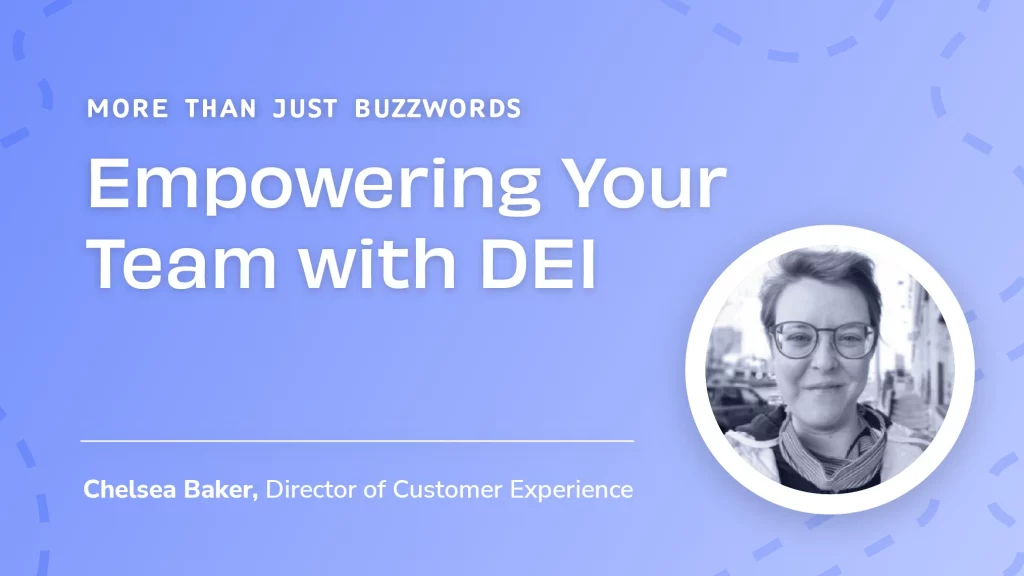Hiring and Interview Tips to Increase Workplace Diversity
Posted by Dave • November 19, 2020 (Last modified December 1, 2022) • 9 min read
Inequality in the workplace is well known yet still prevalent. According to Fortune 500 data, nearly three-quarters of business executives in the United States are white men. While getting a great job is hard enough for anyone outside that group, reaching the top of the corporate ladder is incredibly challenging when you consider a stat like that.
Fortunately, diversity is now a top priority for many HR professionals. It only makes sense that the makeup of an organization’s workforce should reflect society as a whole.
And forming a diverse team isn’t just the right thing to do, it can also result in business success. People with different backgrounds and life experiences bring unique perspectives to the table. You hear a variety of thoughts and opinions which is where truly great ideas come from.
This guide will teach you how your company can succeed in attracting a diverse group of applicants and form an interview process that fairly evaluates candidates based on their skills and experience. For more information about workplace diversity and how it can empower your workforce, catch the on-demand version of our DEI webinar.
Build a diverse candidate pool
Many companies with homogeneous workforces claim candidates from different backgrounds just don’t apply for their jobs. “We didn’t receive any minority candidates,” they say. “We can only hire people who apply.”
The problem is these organizations only think about the importance of diversity hiring after the fact. Let’s explore how to attract a diverse group of candidates at the start of the hiring process.
Start with a job profile
Most hiring managers know what professional background an ideal candidate should have when they set out to fill an open position. However, hiring is a long process and other factors can end up clouding their judgment as time goes on.
This problem isn’t easy to overcome but creating a comprehensive job profile to consult throughout the hiring process is a good start. Write down the tasks and responsibilities the future hire will take on. Then determine exactly what skills and experience they’ll need to have to be successful. Share this document with everyone involved in the hiring process so the entire team is always on the same page. Whenever there is a critical decision to be made, consult the job profile.
Be conscious when writing job descriptions
Once you have a job profile, you can easily convert it into a job description to post on your website and job boards. Just be sure to think about how your word choice can attract or deter certain people from applying.
It’s obviously important to avoid gender-specific pronouns. Never refer to the future hire as “he” or “she.” Instead, use inclusive language like “the ideal candidate” or “the future hire.” Implying you’re seeking someone of a certain gender is a surefire way to alienate potential candidates and is a bad look in general.
What is less apparent is how adjectives commonly used in job descriptions have a gender-specific connotation. For example, “assertive” and “determined” are often associated with masculinity, while “compassionate” and “supportive” are considered more feminine. That’s not to say these traits don’t exist across genders but it’s worthwhile to consider if you really need them in your job descriptions.
A better approach can be to keep the language straightforward so you attract people with the right qualifications. Then evaluate soft skills during the interview stage.
Don’t get caught up in resume details
Resumes are meant to provide insight into a candidate’s background but they often reveal much more about who we are. The extra details can cause biases to occur before a company even speaks with a candidate. For example, studies show that people with uncommon names have a harder time getting hired since some recruiters or hiring managers would rather move onto the next candidate than struggle with pronunciation. In other cases, the year someone graduated from college or the school they attended can lead to ageism or assumptions about intelligence.
Again, what matters is the candidate’s skills and experience. Don’t be afraid to ask someone if you pronounced their name correctly or consider impressive candidates who have a different level of experience. It can also be beneficial to establish an organizational policy that a candidate’s college has no bearing on how you evaluate them. For example, Google stopped hiring candidates exclusively from top-tier universities after they discovered it wasn’t a predictor of future job success.
Simply being aware of the biases that stem from reviewing a resume is the first step in combating them. Some organizations even use blind recruitment—the process of removing all identification details from resumes so only skills and experience are displayed. It’s worth considering but requires software or a time-consuming manual process.
Showcase employment benefits and company policies
Everyone appreciates employment benefits but some people rely on them more than others. Highlighting what your company offers helps attract talented candidates who value more than a paycheck in a job.
For example, flexible work schedules and parental leave will naturally make your company more appealing to working mothers. Additionally, work-from-home options attract different candidates who live outside of your company’s immediate community.
However, if you’re committed to diversity hiring, think outside the box with benefits and company policies. For example, some well-known brands make every employees’ compensation details publicly available to combat income inequality. Others allow employees to select what holidays they choose to observe to be more inclusive to people of different religions. Consider what benefits and perks your company can feasibly offer to be a great place to work for every person on your team.
Go where the candidates are
Instead of posting a job description and hoping people from all backgrounds apply, ask a company representative to network with different groups of professionals.
Depending on where your company is located, there are likely professional groups or events that serve specific communities. For example, both the National Black MBA Association and Association of Latino Professionals for America have chapters nationwide. A quick glance at Meetup will help you find events for women and other groups of professionals.
Proactive candidate outreach is one of the best ways to hire great people. You can connect with professionals who aren’t actively seeking a new job and share why your role is a great opportunity.
Evaluate every candidate equally
Even if your company succeeds in attracting a diverse pool of candidates, it can all be undone with a poor interview process. A well-intentioned hiring manager can still subconsciously favor a candidate who looks and sounds like them. And the interview stage is often when this occurs since there is so much focus on the person rather than what they can do.
The key is to bring structure to your interview process by ensuring every interviewer evaluates candidates based on their professional qualifications. Here are some ways to form an interview process that values job fit over everything else.

Assemble a diverse hiring team
Involving multiple people in the interview process brings different opinions to your candidate evaluations. Instead of one person choosing who they like best, a hiring team composed of different people can garner a discussion about who is most suited for the job.
Most companies do this to some extent. Candidates will meet with the hiring manager and the people who work under them. But the problem with this approach is team members are inclined to agree with their boss.
Consider going a step further and involving people from outside of the future hire’s immediate team. Ask someone from a different department and the leadership team to also participate and consider how candidates align with organizational values.
Ensure each member of the hiring team forms an opinion on their own, then get everyone together to share their thoughts.
Have a consistent interview process
It’s important every candidate is evaluated exactly the same when interviewed. Even more than preventing biases from occurring, it ensures you select the best person for the job.
First and foremost, interviewers should ask each candidate the same questions so answers can be compared post-interview. It’s also important the questions focus on the candidate’s professional background and how they would approach the job if hired. Unconventional interview questions rarely offer any insight into a person’s abilities and just muddy the waters when it comes time to select the best candidate.
It’s also a good idea to provide each interviewer with a short questionnaire to complete after meeting with candidates. Using the job profile you created at the start of the hiring process, list the skills, qualities, and experience required for the role and ask hiring team members to assess candidates in each area. When everyone gets together post-interview, they should talk through their responses and share how they arrived at their opinion.
Use candidate evaluation exercises
While interviews are crucial to the hiring process, they don’t always result in the best person for the job standing out. Some people are more extroverted than others and better at communicating their qualifications to a group of strangers. Additionally, if someone isn’t a native English speaker, they may have a hard time articulating what they can do in an interview.
Requesting candidates complete an evaluation exercise is often a better barometer for assessing job skills. It can be as simple as asking the finalists to complete a short test or sample project that doesn’t take too much of their time. This additional step in the interview process levels the playing field for each candidate and prevents you from hiring someone who exaggerated their qualifications.
Hire on values, not culture
Many companies tout the importance of culture when hiring. They want to bring on people who are not only talented but also fit in with the wider team. Interviewers are often asked to consider if they would want to go to lunch with the candidate or hang out with them on the weekend.
However, those questions can stifle diversity. Even an open-minded team member will tend to gravitate toward people they’re comfortable with rather than someone from a background they’ve never been exposed to.
A company culture should be built on values. Your organization should define the important points each employee must keep in mind as they go about their job. Those traits, combined with skills and knowledge, will help you discover a great addition to make to your team.
Make your organization an inclusive place to work
There is a lot that goes into building a diverse workforce and it all starts with the right hiring process. It sounds simple but making a concerted effort to attract a diverse pool of candidates and conducting bias-free interviews will gradually lead to a workforce of people from a variety of backgrounds.
Don't Miss Out on More Great HR Articles!
Subscribe to get the latest, greatest HR and Talent Development content straight to your inbox.


